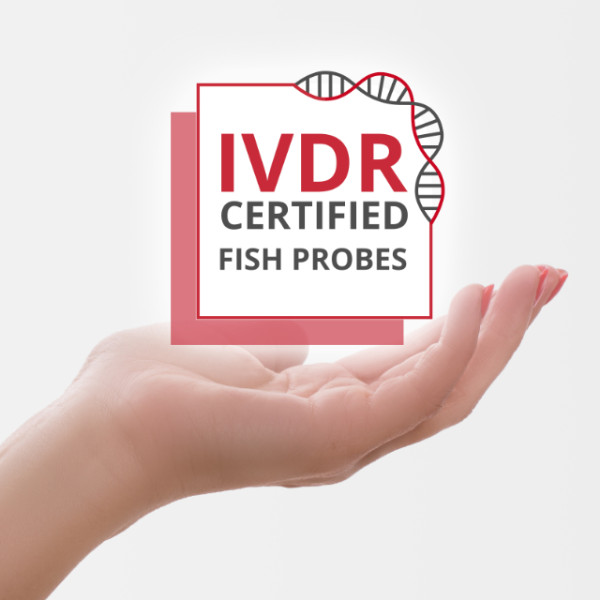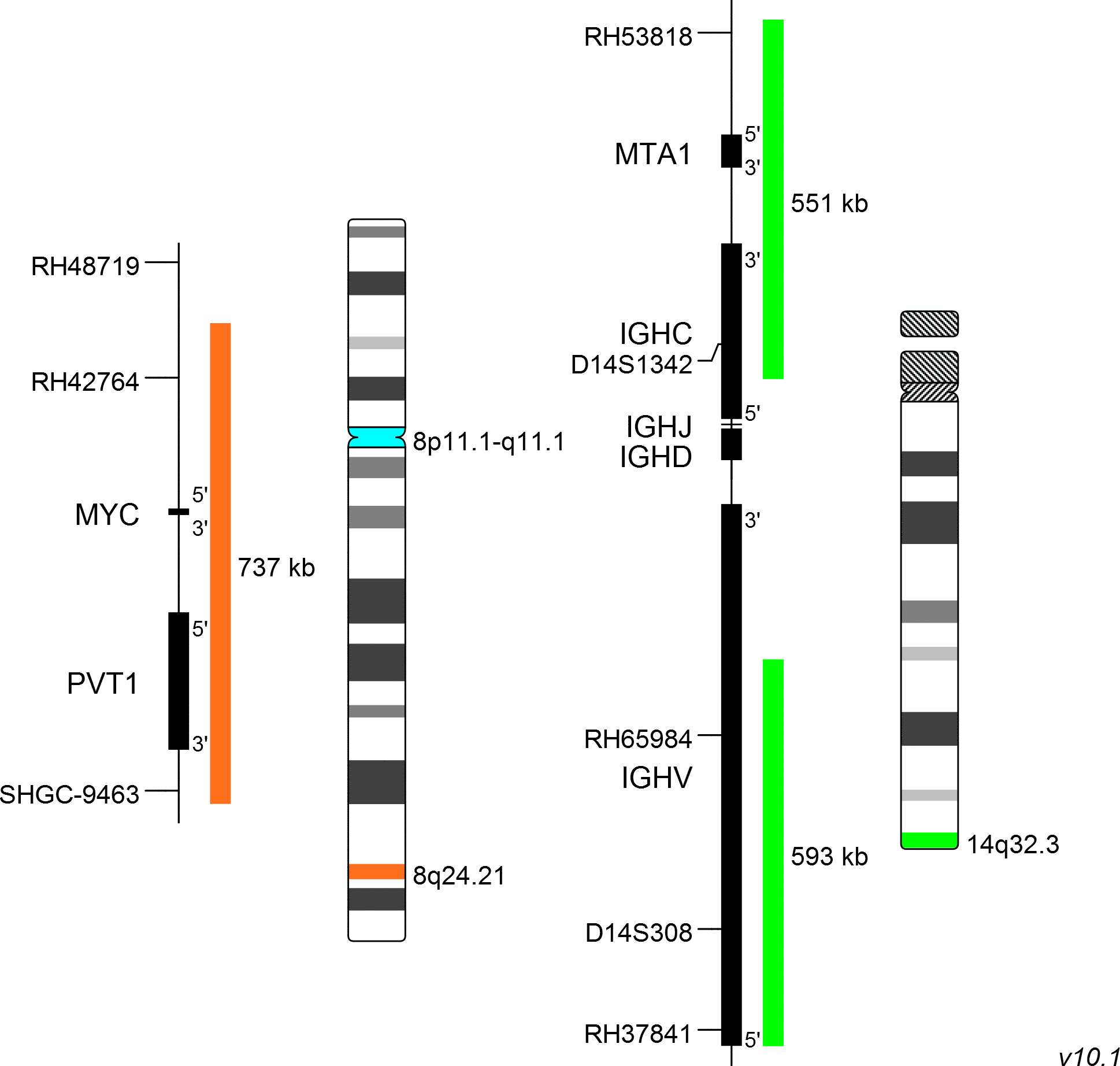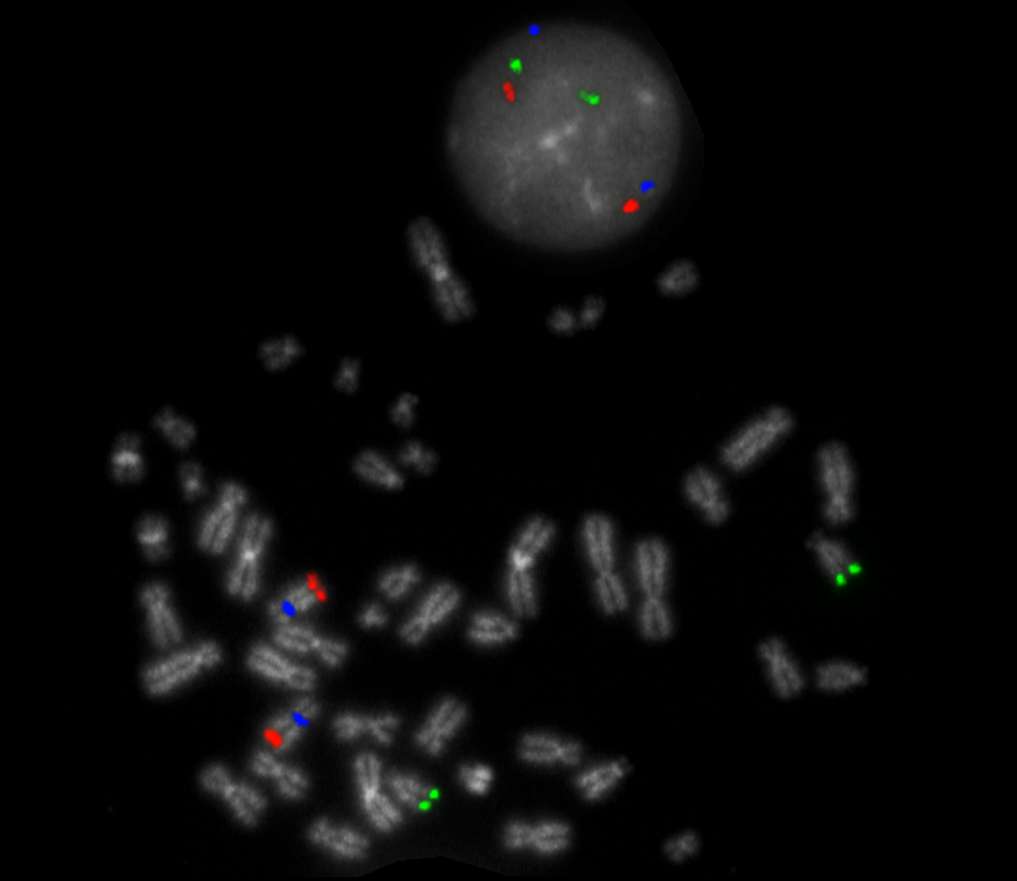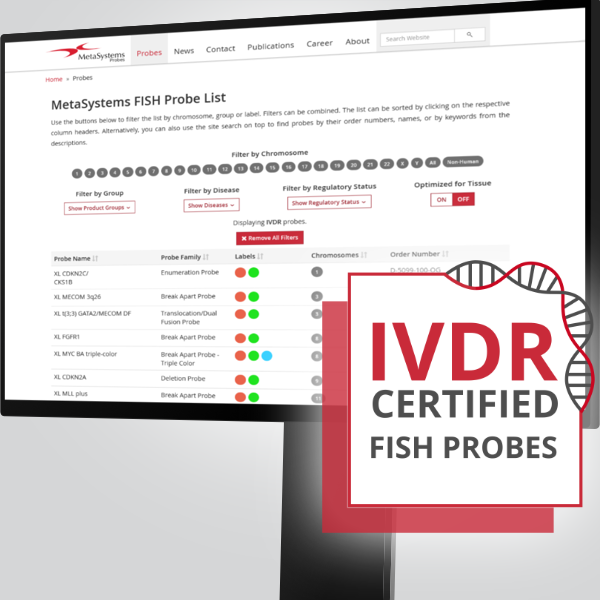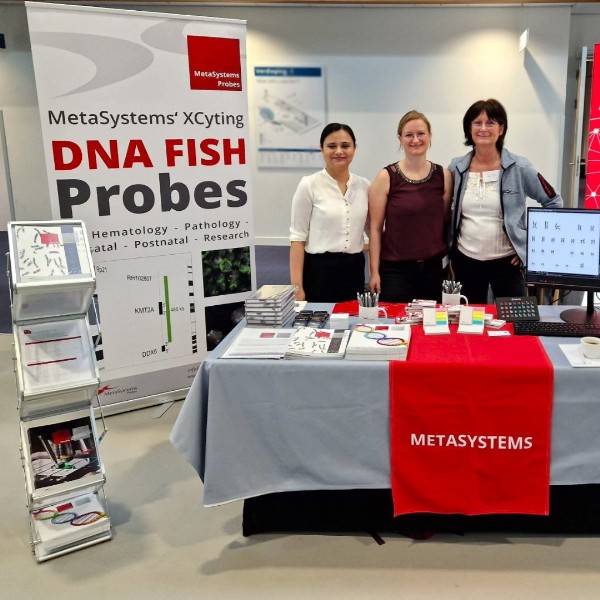Chromosomal translocations involving the IGH locus are recurrent in many types of lymphomas. Burkitt lymphoma (BL) is a rare, but fast growing type of non-Hodgkin lymphoma (NHL). The translocation between the MYC gene locus at 8q24 and the immunoglobulin genes (IG) for the kappa light chain at 2p12 (IGK), for the heavy chain at 14q32 (IGH) or for the lambda light chain at 22q11 (IGL), juxtapose the MYC gene to an IG enhancer, resulting in overexpression of MYC. About 80% of BL patients show the MYC rearrangement t(8;14)(q24;q32) while approximately 10% show a translocation between the MYC gene region and IGK or IGL. Additional breakpoints in BCL2, BCL6 and CCND1 are indicators for an aggressive course and short overall survival.
MYC translocations are also present in other types of lymphomas such as diffuse large B-cell lymphoma (DLBCL), which is difficult to distinguish from BL by morphology and immunophenotype alone. The use of different techniques including FISH, genomic and cytogenetic profiling can provide additional information.
Clinical Applications
- Non-Hodgkin Lymphomas (NHL)
- Acute Lymphoblastic Leukemia (ALL)
